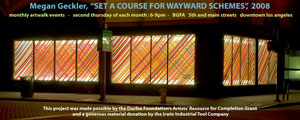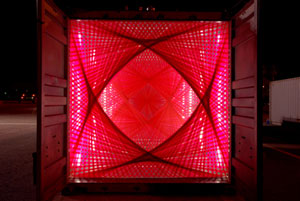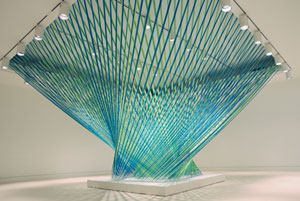Chrissie Hynde and Patti Smith always weigh in heavy. Thereafter, it’s scattered with mentions of Joan Jett , Ann and Nancy Wilson from Heart , and Debbie Harry , with the conversation trailing off at (maybe) Grace Slick and Pat Benatar, and if you go more contemporary, Ani DiFranco and PJ Harvey get mentioned, too…as women that possess a certain kind of middle-finger swagger that guys who play music for a living perceive as authentic, legit. I ain’t saying it’s right, I’m just saying it is…
Janis’ response was Fuck that, people should see all of it. On some days, she just felt Really Shitty. And on other days, she was Drunk and Pissed, maybe Lonely. At a time before our culture reveled in this bizarre sense of digital voyeurism – as a matter of course, technology available to the public today was a consideration of science fictioners back then – that seems almost necessary for figures of popular culture to maintain for the sake of market position, Janis’ attitude strikes me as beautiful defiance. So willing to bare herself on so many levels truthfully, with the added weight of being a female performer during that period of time, showing the world her low points was a level of transparency that has always moved the shit out of me, if you'll pardon my lack of articulation.
And second, in conducting a quick online interview with her just a few days ago, Ms. Geckler’s willingness to discuss her work and its evolution on so many levels in such a personal manner, to have such clarity of purpose, and a genuine interest in sharing this stuff so succinctly…well, let’s just say this kind of transparency is a glorious antidote to wondering whether or not most visual artists were as full of shit as most musicians. In this case, ain't no way. Geckler balances on a beam of academic understanding and childlike curiosity in a way that has my undivided attention, because I believe that the comfortable juggling of these premises makes for art that gets people thinking…and due to the aforementioned Phony Authenticity, we need more artists that, like Geckler did with my interview, know their vision and can articulate it, and therefore share it on the phenomenal platform that the digital world provides. My thanks to the artist for this exchange, by the way…
www.megangeckler.com – and be sure to go to the exhibit before it leaves town.
I really look forward to seeing more of her work in the future…
1. I’m always intrigued by the journey upon which any artist arrives at his or her medium and/or materials. In your case, I dig the juxtaposition between a formal art education and the ubiquity of your material that I have certainly never seen used to really drive the entirety of a creative application. Why flagging tape?
The discovery of flagging tape was part of my graduate school education at Claremont. It was the 1999-2000 Y2K New Years and upon coming back to my studio in the foothills of the San Gabriel Mountains in sunny LA I decided that it was time for new beginnings. I boxed up all the “art supplies” in my studio, and put them in storage. While I was packing, I came across random packaging materials, plastic bags, little pieces of string, basically “trash”. These materials were categorized by color and type, tacked all over my walls, delicately folded and filed. I would bank serious hours at the studio, completing a number of mini sculptures each day. They were sketches (or models) for bigger things, completely formal studies using materials that were lowbrow, but unidentifiable or anonymous due to their high level of saturation in our daily lives. I worked on these for months, refining my material subset as I went along – weeding through paper to plastic, away from yarn and toward synthetic plastic tubing. My concern was that by using such common materials that I had to distance them as much from trash as possible. Certain plastics could simply be wiped down with 409 or Goof Off; others collected dust, insects, and debris. These observations and limitations of each possible material guided my investigation. While collecting, I happened upon flagging tape. It was the perfect material – non-adhesive, translucent, like rope or yarn, but devoid of the loaded backgrounds of each when used in a fine art context. Over the summer break at the end of my first year of grad school, I had the opportunity to take over a 40x40x14 foot gallery. The result of this was the first of the large-scale flagging tape pieces. The work grew organically from there, changing according to the site, becoming more dimensional and complex.
2. With this site-specific installation work, is there pre-meditation? Or do you work improvisationally/intuitively (therefore, intentionally NOT considering the space prior to the installation)? And if it’s the former, would you ever consider approaching the spaces with the latter in mind?
I have a formula that I follow when I am invited to exhibit my work at a space. I visit to check it out, take measurements and photographs. It’s not uncommon for me to take over 300 photos while getting an idea of what I’m up against. A large part of making work this large and labor-intensive is that I have to be hyper aware and observant. Overlooking a small detail can later become an enormous installation issue. Also, not a lot of exhibition spaces are cool with me drilling into the floor a few hundred times. So I need to know any limitations or concerns that the curator/director has before I even start dreaming up possible installations.
After being introduced to the space and making an accurate floor plan to work from later. I spend some time alone with the space, just looking around and experiencing it. I study the intent of the architecture, the intended use for the space, the flow of foot traffic. The quirks and architectural features of each space such as catwalks, soffits, or strange inconsistencies in construction become opportunities for me to begin a dialogue that is specific to each place.
I love the idea of something being handmade, but looking digital. I grew up a child of a computer programmer; I used to dial up to local hubs, program in code and spent high school being a math and science nerd who dabbled in photography. My first year of college was spent in a pre-med program in New England. Transferring back home to the Tyler School of Art outside of Philadelphia and then ultimately ending up in Southern California was just something that happened. As an east coast kid of the 80’s we grew up thinking that everyone in California was a Valley Girl or a Surfer Dude.
But here I am, living a few blocks off Skid Row in downtown LA and it’s nothing like I thought it would be. Sure, you can go to Rodeo and get your fill of implants and collagen, or into mid-Wilshire for a casual celebrity sighting, but I spend the majority of my time in the urban oasis/wasteland that is the ever-transforming Downtown Los Angeles.
It’s a world of razorwire-protected empty lots overgrown with dead weeds; next door is a converted warehouse that now offers multi-million dollar lofts with gated green spaces, bordered on all sides by shipping companies, recycling plants and big rig washing stations. It’s a land of inconsistencies and dualities. You can get a gourmet sausage around the corner while you witness the latest filming of CSI:NY. (In that episode the writers will refer to my studio as being in Hell’s Kitchen). Los Angeles is the New York that you grew up watching on TV. It’s surreal.
How does it all relate to my work? In LA anything is possible, you can be anywhere in the world with a few props. One night, I was transported to Shanghai when I walked out of dinner, (Mission Impossible 3 was being filmed). I love that idea – What are multi-million dollar productions if not products of hours of faux-finishing and set dressing that is faking being real?
My work seems digital, and mass-produced, mathematical and slick. But it’s really the result of hundreds of hours of work, tens of pairs of helpful hands, and finger-blistering repetition. It has that same double life/double meaning. Surface or structure? Digital or handmade? Art or Design? I like exploring the space between the gaps.
4. And while I may be fishing like hell for subtext in a pond where they ain’t nothing biting, I appreciate the gender implication of a woman working with materials generally associated with environments almost entirely devoid of women. Conscious on your part, or was it something as simple as the inexpensive nature of the tape?
The gender implications to which you refer are certainly relevant when exploring my work. Having been through two very rigorous and different fine art programs, I can’t claim ignorance for using the materials that I do. There is no way I would have gotten away with that in grad school, not with instructors like Rachel Lachowicz and Roland Reiss who are both artists who are completely invested in art history, physicality and the loaded meaning of materials.
I know my color palette is a bit girly at times, but my hope is that the attention to detail helps to strip the work of sexual identity, or even human identity to a certain degree. My installation team and I try to be robotic and identical in our methods and make everything very consistent. All of the eyehooks are perfectly spaced and angled, the knots identical, lines always level. My intent is that when the viewer is confronted with such a massive undertaking (that maybe) it is overwhelming enough to suspend your disbelief just long enough to be overwhelmed and not immediately think about the process, but instead delight in the end result itself, that moment in time.
If the eyehooks weren’t so linear, or the tape was twisted, and looked “hand made” those details would stand out and it would all come crashing down. I do not really want the viewer to be thinking about “craft” when they initially come in contact with the work, even though it is obvious that it is handmade.
I think the decision to work with these industrial mass-produced construction materials (adhesive vinyl, flagging tape, zip ties, etc.) are all part of my ongoing investigation into the gaps between disciplines and gender roles.
5. You refer to these types of installations as ‘drawings in space’. Did your artistic curiosity begin two-dimensionally, as a drawer, and then added another dimension with sculpture in your Master’s work? Or did you begin your process three-dimensionally?
I started out interested in Photography, Painting and Printmaking, taking a medley of classes in two and three dimensional disciplines, art, craft and design. Tyler had a very rigorous foundation program and encouraged us to branch out during our sophomore year to experiment and come to our own conclusion and choice of majors organically. I settled into Sculpture as my concentration after an instructor asked me if Photography (plus) Time (equals) The Third Dimension? And if so, was video really Three Dimensional work? In the years that followed I came back to that notion regularly and have wondered, if that is true, then Sculpture (plus) Time and Movement (equals) the Fourth Dimension, right? I was thrilled when LA Critic, Shana Nys Dambrot, postulated that I had created a Fourth Dimension in her review of “Set a course for wayward schemes”, a corner piece that would appear to shift and move when the viewer was in motion.
I think of my work as drawing in space because it is composed of lines, and typically sculpture has both mass and volume. These works are weightless, – yet take up space. Without being attached to the walls, they wouldn’t exist. The existing architecture is what holds it all together.
Two points define a line; three points define a plane. A plane is a 3D space, but a piece of paper is a 2D space. How is a piece of paper not a 3D space if it is essentially a plane? These gaps between definitions and reality, the stories we’re told to explain and develop our categorical imperative as individuals exist to be questioned and investigated. For me, that ongoing quest for the edges of definition with adjacent concepts is territory that is ripe for artistic exploration.
6. What are your influences? I’m less interested in the formal WHOs, and more interested in the WHATs.
I adore painting. For me, the layering, glazing, opacity, presence/absence is a true source of inspiration. When I think of how many different works have been made with “paint” as a material, I am overwhelmed. That simple realization makes me want to continue my investigation of alternative materials and methods of constructing art.
I am a huge fan of minimalism and feel that its end may have been premature. There continues to be so much to investigate in the pure physicality of materials. I think that the combination of Design, Painting and Sculpture, Minimalism, OpArt, and Light+Space movements along with the basics – like the elements of design and color theory provide an interesting context that is universal to our human experience and the practice of art making.
7. What other artists working today, if any, inspire you and why?
Tom Friedman , Tara Donovan and Tim Hawkinson for their whimsical use of everyday materials. Erwin Redl and Richard Serra for their attention to architecture and space and our pathways through it. James Turrell for his ability to challenge our most basic of assumptions about space by using light. I admire Ellsworth Kelly and Karl Benjamin for their life-long exploration into color and shape. Pae White , Sarah Sze , and Shirley Tse for their ongoing exploration into the overlap between Art and Design while maintaining whimsy and grandeur.
8. How did you come to the title of this installation?







